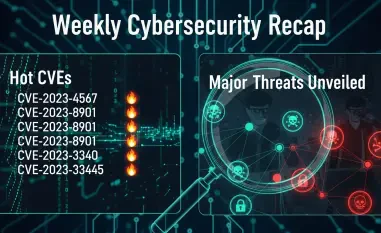In the ever-evolving landscape of manufacturing, artificial intelligence (AI) stands as a transformative force, driving unprecedented gains in efficiency, productivity, and innovation across supply chains and production lines. Yet, this remarkable technological advancement casts a long shadow, as it simultaneously equips cybercriminals with sophisticated tools to orchestrate devastating attacks. The manufacturing sector, a critical backbone of global economies, now faces a surge in cyber threats, with attacks increasing by a staggering 300% since data tracking intensified a few years ago. High-profile incidents, such as the ransomware assault on Norsk Hydro, reveal the crippling potential of these breaches, disrupting operations and costing millions. As manufacturers embrace AI to stay competitive, the pressing question emerges: how can they protect themselves from the very technology propelling their progress? The answer lies in harnessing AI itself as a formidable shield against these digital dangers, reshaping cybersecurity for a new era of threats.
The Dual Nature of AI in Modern Manufacturing
The impact of AI on manufacturing is profound, offering tools that optimize everything from inventory management to quality assurance with remarkable precision. By analyzing vast datasets in real time, AI systems enhance decision-making, reduce downtime, and streamline complex processes, positioning manufacturers to meet rising demands with agility. This technological edge has redefined operational standards, allowing companies to predict maintenance needs and improve output without sacrificing quality. However, this reliance on AI also introduces a perilous flip side, as the same algorithms that boost efficiency are exploited by malicious actors to identify and target vulnerabilities. Cybercriminals leverage AI to accelerate reconnaissance, scanning networks for weaknesses at a pace unattainable by human hackers, thus amplifying the risk of breaches. The duality of AI as both an enabler of progress and a catalyst for threats underscores the urgent need for adaptive security measures in an industry increasingly driven by digital innovation.
Beyond operational benefits, the sinister application of AI in cyberattacks reveals a growing sophistication that challenges traditional defenses. Techniques such as AI-generated deepfake media are now used to craft highly deceptive phishing campaigns, tricking employees into divulging sensitive information or granting unauthorized access. These tactics exploit human trust, bypassing conventional safeguards like email filters with alarming success. Machine learning models further empower attackers by automating the discovery of software flaws and mapping intricate network topologies in mere hours, a process that once took days or weeks. This rapid escalation in attack capabilities means that manufacturers can no longer rely on outdated, manual security protocols to safeguard their assets. The pressing reality is that combating AI-driven threats requires a paradigm shift toward equally advanced, technology-driven defenses capable of matching the speed and cunning of modern adversaries in the digital realm.
The Risks of IT and OT Convergence
The integration of information technology (IT) and operational technology (OT) has ushered in a new era for manufacturing, enabling seamless data exchange and remote oversight of critical systems. This convergence allows for real-time monitoring of machinery, predictive analytics for operational efficiency, and enhanced collaboration across departments, ultimately driving smarter production environments. However, this blurring of boundaries between once-isolated OT systems and internet-connected IT networks has significantly expanded the attack surface, exposing vital infrastructure to external threats. Previously secure through air-gapped setups, OT environments now face risks akin to those in IT, including ransomware and data theft, as connectivity grows. This shift, while innovative, has inadvertently opened doors to cybercriminals who can exploit interconnected systems to disrupt manufacturing processes or steal proprietary information, highlighting a critical vulnerability in the industry.
Compounding this challenge is the inadequacy of traditional cybersecurity approaches in addressing the complexities of IT/OT integration. Manual monitoring and reactive strategies falter against the scale and speed of AI-enhanced attacks targeting these converged environments. For instance, a single breach in an OT system can cascade through interconnected networks, halting production lines and causing widespread financial damage. The dynamic nature of modern threats, fueled by automated tools, demands a rethinking of defense mechanisms to protect both digital and physical assets. Manufacturers must prioritize solutions that bridge the gap between IT and OT security, ensuring comprehensive visibility and rapid response capabilities across all layers of their operations. Without such measures, the benefits of digital transformation risk being overshadowed by the potential for catastrophic disruptions in an increasingly interconnected manufacturing landscape.
Harnessing AI for Robust Cybersecurity
Turning the tide against AI-driven cyber threats in manufacturing begins with embracing AI itself as a cornerstone of defense. Autonomous security operations centers (SOCs), powered by AI, offer a groundbreaking approach to safeguarding critical systems by processing vast streams of data from network traffic, user activities, and threat intelligence in real time. These systems excel at detecting subtle anomalies and indicators of compromise that might evade human analysts, enabling swift identification of potential breaches before they escalate. By prioritizing alerts and automating initial responses, AI reduces the mean time to detect and respond to incidents, fortifying resilience against sophisticated attacks. This technology empowers manufacturers to stay ahead of adversaries, transforming cybersecurity from a reactive burden into a proactive shield that adapts to evolving risks with unparalleled efficiency and precision.
A multi-layered AI defense strategy further enhances protection by integrating diverse technologies tailored to the unique challenges of manufacturing. Predictive analytics and deep learning forecast potential threats based on historical patterns, while hyperautomation streamlines security orchestration for rapid mitigation of risks across complex environments. Generative AI and graph machine learning connect disparate security events to uncover hidden attack vectors, providing a holistic view of the threat landscape. This comprehensive framework ensures that routine, high-volume tasks are handled by AI, freeing human experts to focus on intricate threat hunting and strategic planning. Such an approach not only matches the speed of AI-driven attacks but also scales to address the expansive attack surfaces created by IT/OT convergence. By embedding AI across multiple defense layers, manufacturers can build a robust barrier against cyber threats, ensuring operational continuity in an era defined by digital disruption.
Building a Future-Ready Defense Strategy
Reflecting on the journey through the cybersecurity challenges faced by manufacturers, it’s evident that past efforts often fell short against the rapid evolution of AI-powered threats. The industry grappled with a surge in attacks that exploited the very tools meant to drive progress, revealing the limitations of static, manual defenses. High-profile breaches served as stark reminders of the financial and operational toll of inadequate security, pushing the sector to adapt. The convergence of IT and OT systems, once a siloed strength, became a vulnerability that demanded innovative solutions. Manufacturers learned hard lessons from these experiences, recognizing that the sophistication of modern cyberattacks necessitated a shift toward technology-driven protections that could anticipate and neutralize dangers before they struck.
Looking ahead, the path to resilience lies in committing to AI as the linchpin of cybersecurity strategies within manufacturing. Investing in autonomous SOCs and multi-layered AI frameworks offers a scalable solution to counter the speed and complexity of digital threats. Collaboration between technology providers and industry leaders should focus on developing adaptive systems that evolve alongside emerging risks, ensuring long-term protection. Additionally, fostering a culture of continuous training for staff on recognizing AI-enhanced deception tactics can bolster human defenses. As the digital landscape continues to shift, manufacturers must remain vigilant, leveraging AI not just for operational gains but as a dynamic shield to safeguard their future against an ever-changing array of cyber challenges.













